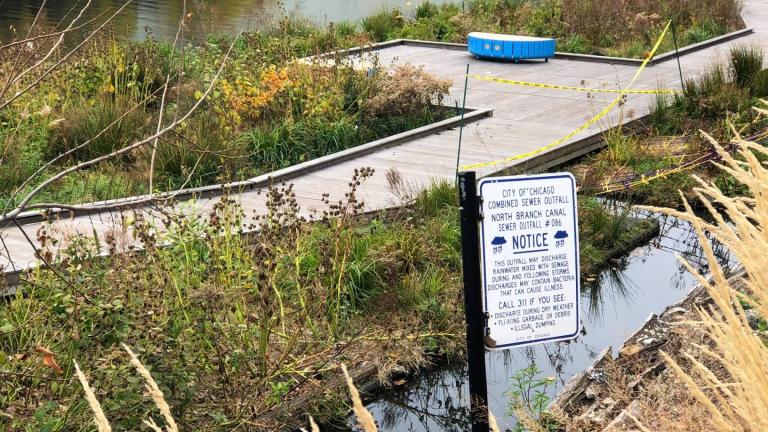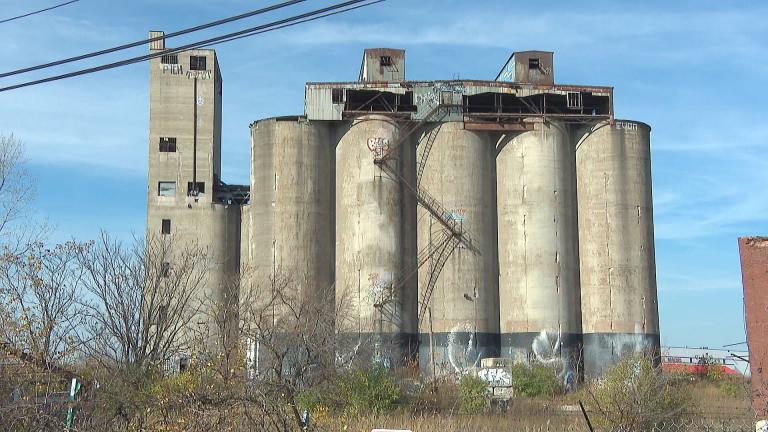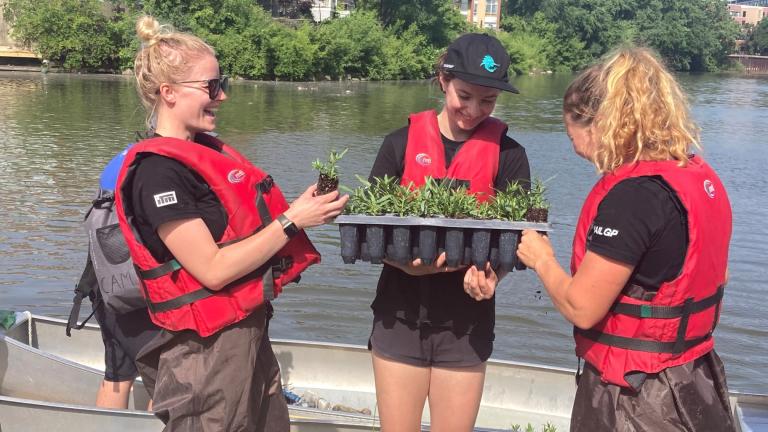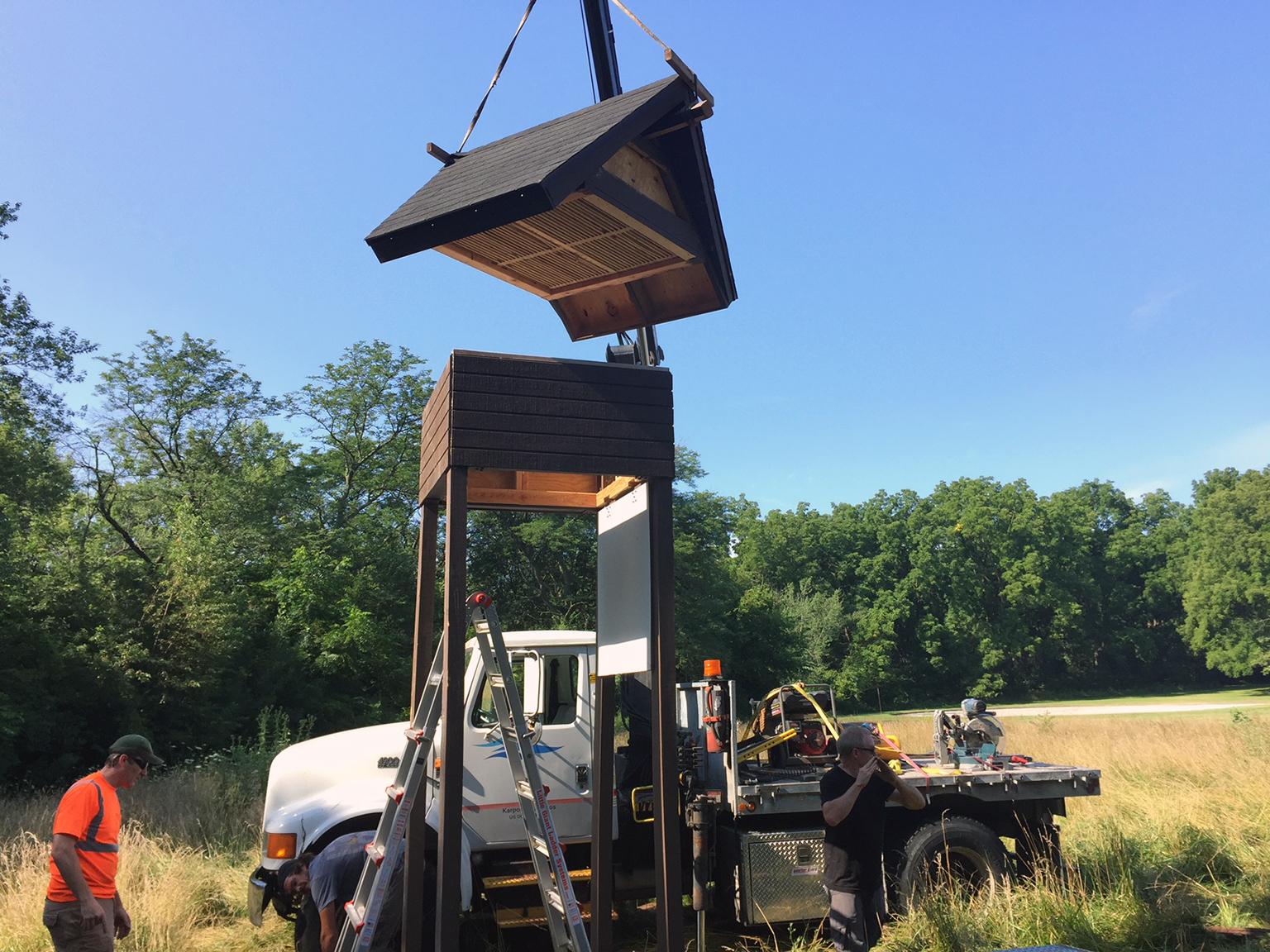 The sixth bat house to be installed in Cook County went up last week at Joe Orr Woods in Chicago Heights. (Courtesy Friends of the Chicago River)
The sixth bat house to be installed in Cook County went up last week at Joe Orr Woods in Chicago Heights. (Courtesy Friends of the Chicago River)
A message for all Chicago-area bats (the flying kind): There’s plenty of room at the inn.
Staff from two area organizations have installed a sixth “bat condo” in Cook County as part of a multiyear effort to increase populations of certain bat species that have declined as a result of habitat loss caused by invasive plants.
On Aug. 1, staff from the nonprofit Friends of the Chicago River and the Forest Preserve District of Cook County used a crane to set in place a new bat shelter near Thorn Creek at Joe Orr Woods in Chicago Heights.
The 4-by-4-foot structures, which look like doghouses without doors or windows, rest atop 12-foot stilts and are big enough for as many as 2,000 bats, or, more specifically, bat mothers.
“These ‘bat condos’ are really bat maternity colonies,” said Margaret Frisbie, the Friends’ executive director. “You get a whole bunch of bats in there and then they help each other survive.”
Of the 13 bat species found in Illinois, Frisbie said seven are “colony nesters” that rely on heat in order to roost and care for their pups.
Bat moms enter through slits near the house’s roofline and huddle together for warmth. The houses are painted brown and positioned in areas exposed to the sun to maximize heat. (Bat mothers desire temperatures of up to 100 degrees for roosting, Frisbie said.)
The bat houses are located near waterways belonging to the Chicago River system in Cook County.
“The sites are deliberately out of the city because there is more constructed bat habitat in the city, buildings where you can roost in,” Frisbie said, “whereas in the suburbs and the forest preserves, there’s less bat habitat than there used to be.”
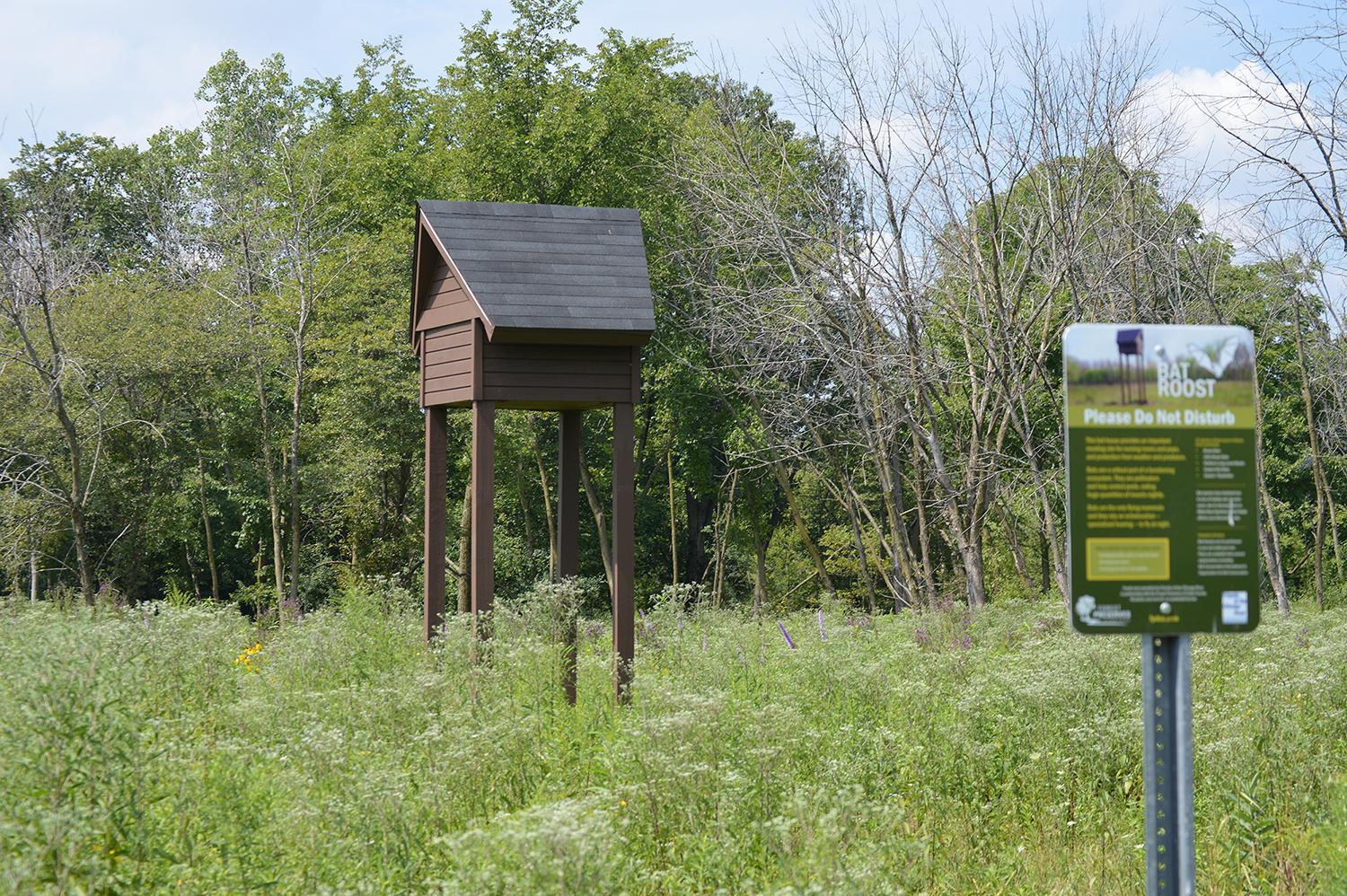 Conservationists have installed six bat houses in Cook County since 2015 to provide safe maternity colonies where female bats can give birth and nurse their pups. (Courtesy Friends of the Chicago River)
Conservationists have installed six bat houses in Cook County since 2015 to provide safe maternity colonies where female bats can give birth and nurse their pups. (Courtesy Friends of the Chicago River)
The bat houses started going up in 2015 but remain empty to date.
“We’re dying to see someone move in,” Frisbie said, noting that the delay is actually normal. “From the research we’ve done and the people we’ve talked to, they say some bats move in right away, but it’s also really common that it [takes] three to five years.”
Just why are these bat colonies so important?
Bats help control populations of mosquitoes and other insects, pollinate plants and disperse seeds that play an important role in the ecosystem.
The bats most commonly found in the Chicago area, big brown and little brown bats, have especially big appetites for insects: One half-ounce little brown bat can eat half its body weight in bugs each night, according to Friends.
Because bats also avoid contact with humans, they provide a more natural option for mosquito abatement, Frisbie said.
“The idea of having these big, giant maternity colonies is really a game-changer,” Frisbie said previously.
Contact Alex Ruppenthal: @arupp | [email protected] | (773) 509-5623
Related stories:

